




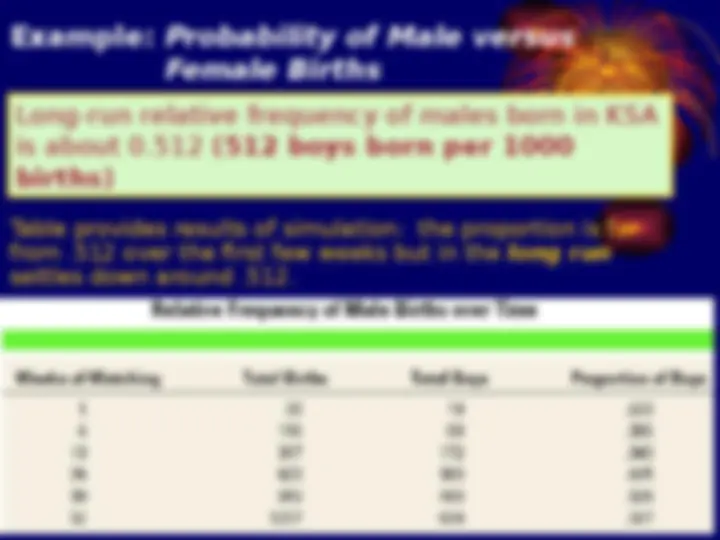

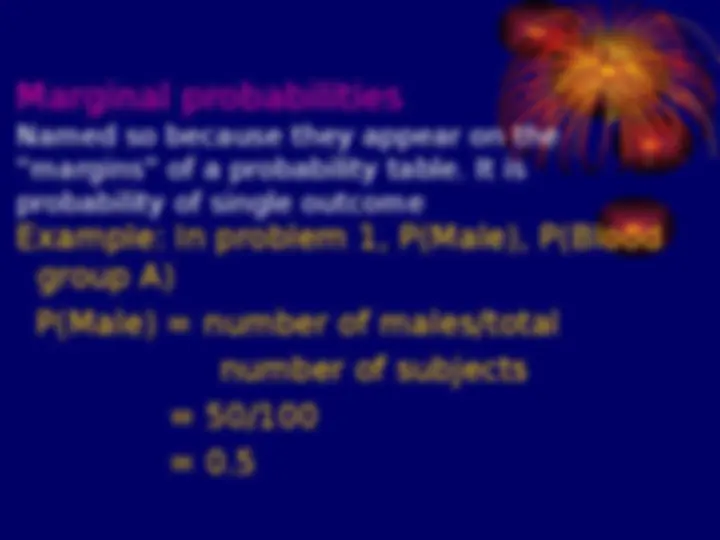
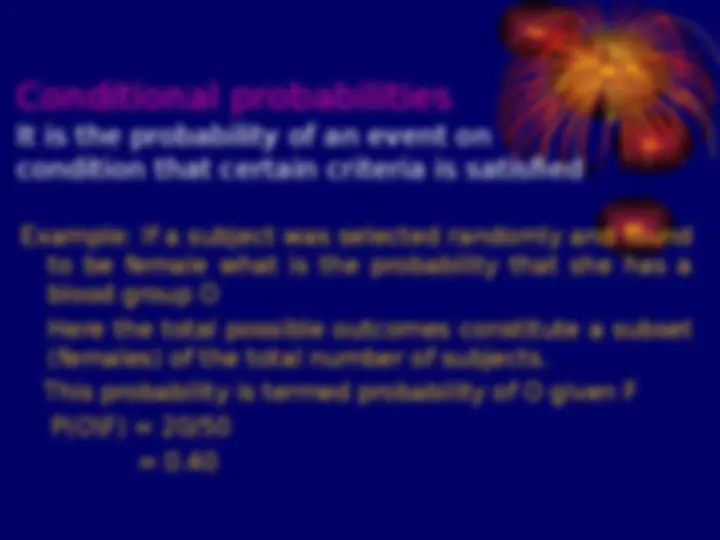
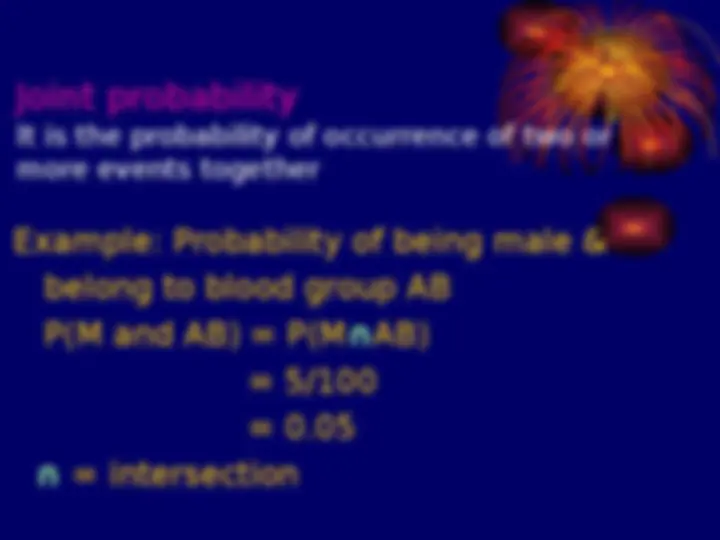

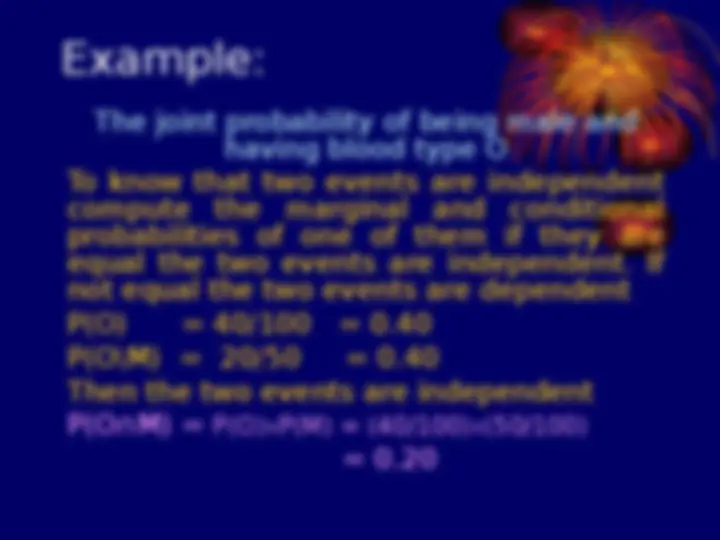
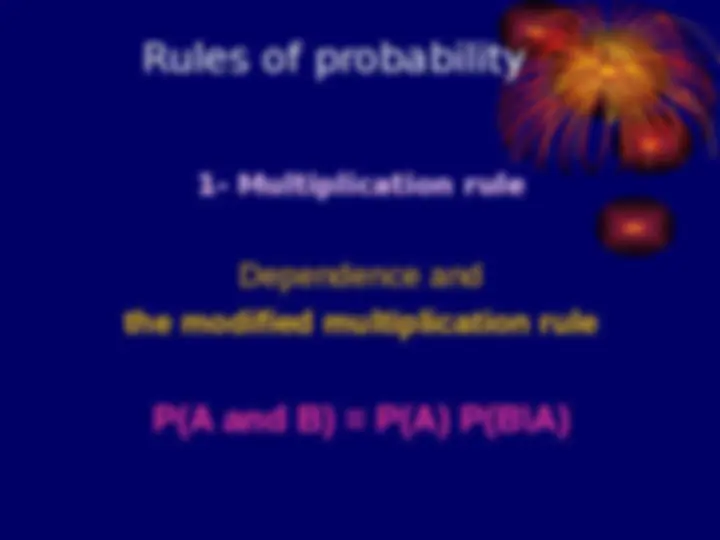

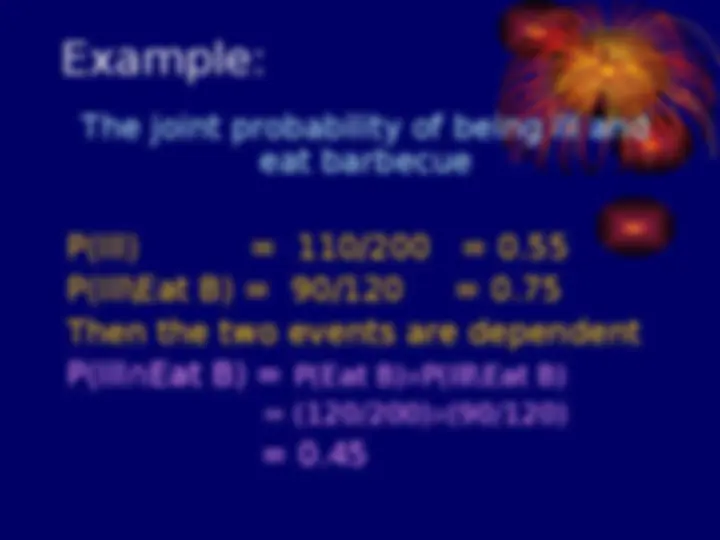
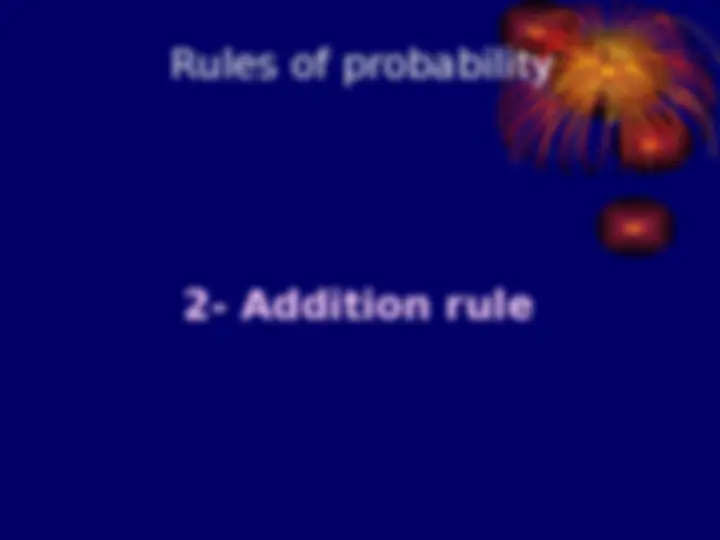

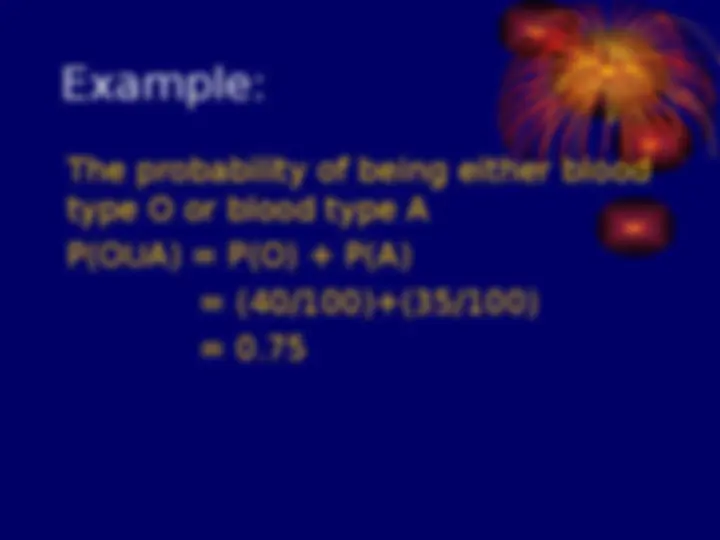
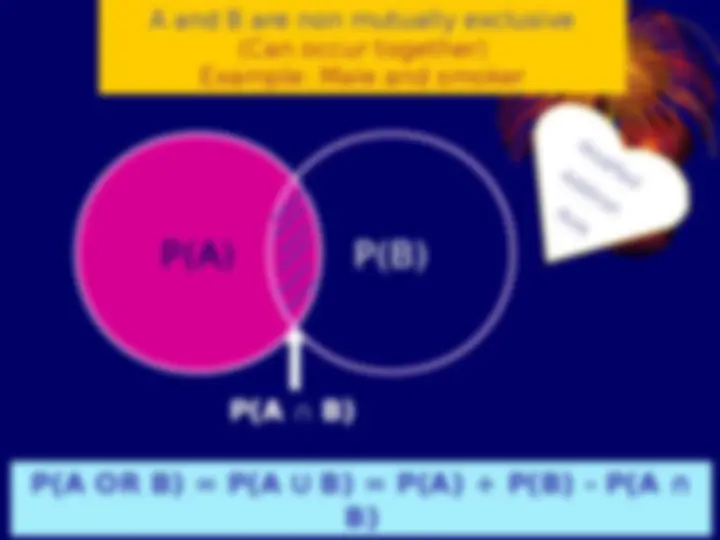

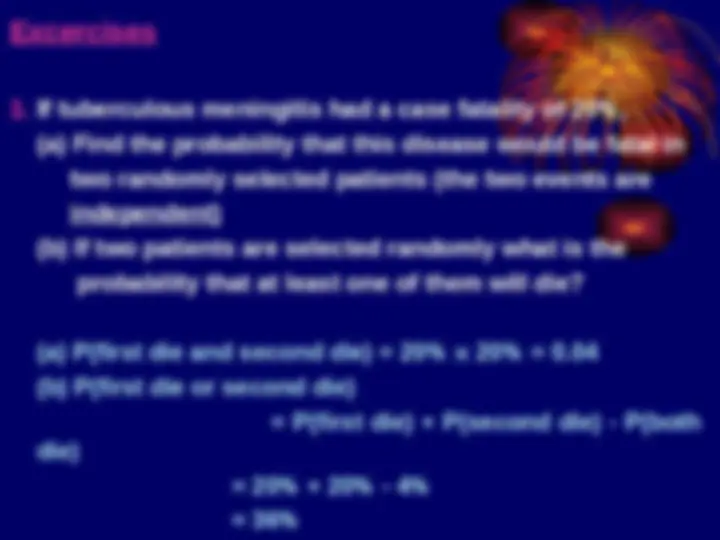

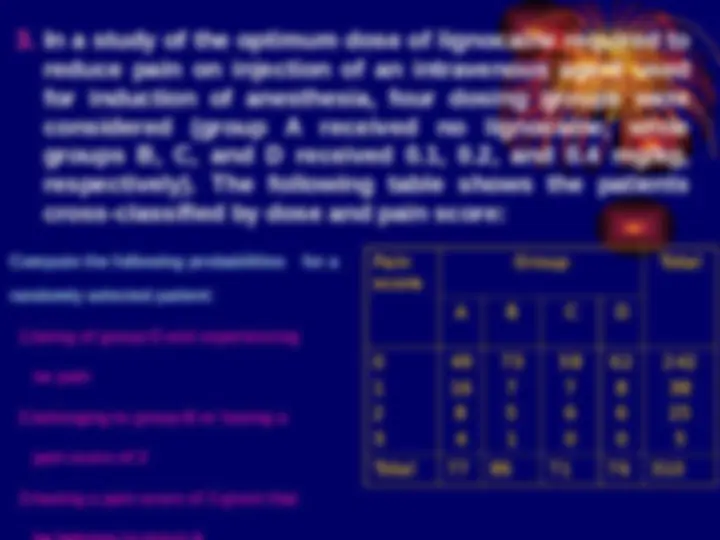
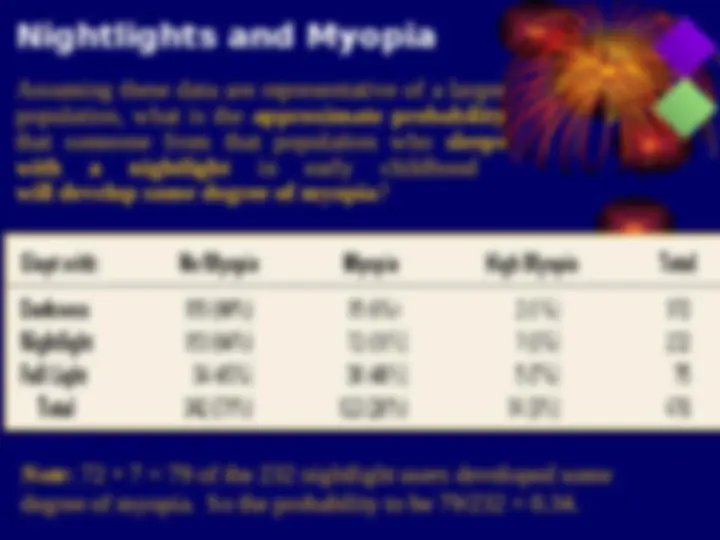



Study with the several resources on Docsity

Earn points by helping other students or get them with a premium plan


Prepare for your exams
Study with the several resources on Docsity

Earn points to download
Earn points by helping other students or get them with a premium plan
Community
Ask the community for help and clear up your study doubts
Discover the best universities in your country according to Docsity users
Free resources
Download our free guides on studying techniques, anxiety management strategies, and thesis advice from Docsity tutors
This shows how to solve problems of probability.
Typology: Slides
1 / 32

This page cannot be seen from the preview
Don't miss anything!

























Dr Mona Hassan Ahmed Hassan Prof of Biostatistics High Institute of Public Health Alexandria, Egypt
Male, Female Sample space: collection of unique, non-overlapping possible outcomes of a random circumstance. Simple event: one outcome in the sample space; a possible outcome of a random circumstance. Event: a collection of one or more simple events in the sample space; often written as A, B, C, and so on
Views of Probability: 1-Subjective: It is an estimate that reflects a person’s opinion, or best guess about whether an outcome will occur. Important in medicine form the basis of a physician’s opinion (based on information gained in the history and physical examination) about whether a patient has a specific disease. Such estimate can be changed with the results of diagnostic procedures.
2- Objective Classical
Relative frequency Assuming that an experiment can be repeated many times and assuming that there are one or more outcomes that can result from each repetition. Then, the probability of a given outcome is the number of times that outcome occurs divided by the total number of repetitions.
Problem 1. Blood Group Males Females Total O A B AB 20 17 8 5 20 18 7 5 40 35 15 10 Total 50 50 100
Marginal probabilities Named so because they appear on the “margins” of a probability table. It is probability of single outcome
Conditional probabilities It is the probability of an event on condition that certain criteria is satisfied Example: If a subject was selected randomly and found to be female what is the probability that she has a blood group O Here the total possible outcomes constitute a subset (females) of the total number of subjects. This probability is termed probability of O given F P(O\F) = 20/ = 0.
Properties The probability ranges between 0 and 1 If an outcome cannot occur, its probability is 0 If an outcome is sure, it has a probability of 1 The sum of probabilities of mutually exclusive outcomes is equal to 1 P(M) + P(F) = 1
Rules of probability 1- Multiplication rule
P(A and B) = P(A) P(B)
The joint probability of being male and having blood type O To know that two events are independent compute the marginal and conditional probabilities of one of them if they are equal the two events are independent. If not equal the two events are dependent P(O) = 40/100 = 0. P(O\M) = 20/50 = 0. Then the two events are independent P(O∩M) = P(O)P(M) = (40/100)(50/100) = 0.
Rules of probability 1- Multiplication rule
P(A and B) = P(A) P(B\A)